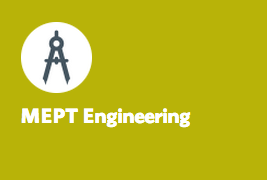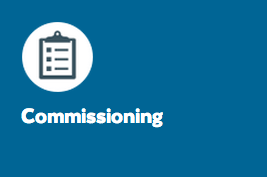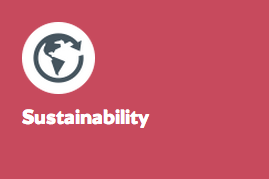2015 Foursight Industry Predictions
At the close of yet another year, we naturally reflect on the events that have transpired—the good, the “not so good”, and any where in between. But since this is the spirit of giving, we decided we should share our four-ward thinking and invite you to join the conversation. What can we four-cast in 2015? We asked our discipline leaders to shed some light on this question. And in the spirit of giving, here’s what our foursight entails….
Mechanical
- Prioritizing Energy – Though this might be an obvious one, it’s still worth mentioning the ever-increasing its ever-increasing priority in the built environment. This will most likely lead to more performance-measuring tools and reporting systems.
- Challenge Codes and Standards – This describes a mentality, that is, to be more inquisitive, questioning status quo. We are particularly looking at the Healthcare industry that traditionally maintained “highly conservative” codes and standards that may be unnecessarily limiting energy efficiency of building systems. We see more collective brainstorming to address new codes and standards to satisfy the protection of patients and staff, while increasing energy efficiencies.
- Design Sharing Tools: More firms developing internal tools to enable more efficient and higher quality systems .
Electrical
- Private Microgrids – The use of private microgrids in-place of public utility distribution systems will increase.
- Plug Load Management & Energy – Plug load management, used to decrease energy use, will gain momentum.
- Electrical infrastructure replacement – This will most likely increase in across various industries, particularly in the Healthcare industry.
- LED lighting technologies – Again, this will most likely increase across most industries, due to the ROI being more widely known and accepted. The industry now has a lot of operating history with LED’ and the true savings they bring to facility.
- Impact of oil prices – The low price of oil will impact the viability of some solutions. Alternate energy systems such as solar PV and fuel cells may not provide an acceptable return when evaluated against traditional power produces with lower energy costs.
- Increase of Resiliency Services – With the increase of dramatic climatic events, so to will increase the need for resiliency services
- Skill Shortages – As the recovery continues, this will get increasingly worse, specifically for Electrical expertise. Firms need to get creative with the utilization of limited skilled labor and become more aggressive recruiters.
- Disaster Planning for Healthcare – Again, due to dramatic climatic events, and codes for seismically active areas, new projects will include these provisions. And existing building facilities will seek options for upgrading their disaster-readiness systems. Most likely this will include more backup chillers, dual-fuel steam sources, backup options for natural gas supply failure, and medical gas reserves.
Plumbing
- Water-Use Benchmarking – More data on actual peak flow rates in modern building will be gathered. If the data is convincing enough, funding will increase for research to support changes to “old” standards. (e.g. the “Modified Hunter’s Curve”) The goal is right-sizing systems to reduce waste of natural resources, energy use, cost and maintenance.
- Graywater Systems: More of these! International Plumbing Code will be updating their graywater codes to allow more sources.
- Following Australia – Australian codes re sanitary drainage piping installation have been changed due to lower flows from fixtures. Mazzetti has been incorporating these changes into new projects where low flow fixtures are used. Alongside other firms in our industry we are looking forward to getting these changes incorporated into the U.S. codes.
- Hot Water?: We will continue to question the need for hot water for hand-washing. More data should become available next year. What if we discovered that due to dead-end hot water branch lengths in most existing buildings, the vast majority of hand-washing events begin and end before the water temperature at the faucet has risen above the ambient temperature of the cold water system? Mazzetti’s work on small facilities in Africa may help us better understand the role of hot water for healthcare. (More on this topic in a future post!)
- Plumbing Fixtures – Specifically in the Healthcare industry, engineers will be seeking more faucets with options for self-cleaning systems, programmable flushing, and hands-free temperature controls.
- Less Expensive Roof Drainage Systems – We’ll see more siphonic drainage systems being implemented, due to the cost savings. How? This specific system offers opportunities for much smaller diameter piping alleviating a need to slope piping.
- Project Types: We will start to see more commercial buildings repurposing their spaces and or replacing/upgrading their existing MEP systems, across multiple industries. For healthcare, we expect more projects aimed at repurposing existing facilities, as well as more off-site outpatient facilities being placed in existing spaces. In some cases, existing conditions may lead us to using vacuum sanitary sewer systems in order to compartmentalize new projects and separate them from other tenants. Many of these will be very fast-moving projects, so we’ll need to be especially efficient with our efforts.
- Water Commissioning Services: With the continued momentum on the Legionellosis Standard (ASHRAE 188P), we’ll see more opportunities for water audits. Mazzetti is creating a group of water-related client services towards this effort.
Technology
- Wireless Speed – The wireless world is becoming as fast or faster than wired counterpart. The new 802.11ac wireless standard supports data throughput of over one gigabit per second. The standard wired jack supports one gigabit per second. Conclusion: Wireless devices will continue to compete with wired… and eventually win the race.
- Distributed Antenna Systems (DAS) – Years ago, the preferred cable was coaxial. You may recall, these cables had holes in the shield to allow the signal to “leak out”, hence the term “leaky coax”. Now manufacturers are making systems that run fiber optic cable to each antenna, allowing rapid additions and changes to the systems. As cellular carriers add frequencies, the DAS systems will be able to easily adapt and provide coverage.
- Passive Optical Networking (PON) – This is becoming more of a viable solution for many of our clients. This system uses the same technology that brings fiber to the home so that TV, Internet and telephones can share the same fiber. The central distribution point for the data network can be located up to 20 km away from its intended recipients. And, it uses a single mode fiber to connect more than 7,000 devices. This system is often incurs a lower installation cost as well as operational costs.
Commissioning
We anticipate seeing a tremendous increase in requests from healthcare (and other) institutions to RetroCommission. Reason being, the Healthcare industry is facing huge pressure to cut costs. Energy costs comprise a significantly larger portion of their budget, and if we can cut energy, it saves them having to cut FTE’s. Additionally, with the declining profit margin in Healthcare, a $1 savings in energy is the same as a $20 increase in revenue based on a 5% profit margin. SO, if we can save $100,000/year in energy, it’s the equivalent to $2M in new patients! (And on that note, have you heard of ASHE’s Energy to Care program?)
Sustainability
- Tackling Big Data – With increasing availability and resolution of building data, a big challenge is being able to synthesize and manage this data. Though software can help with much of this and platforms are coming online that can help significantly, a need for skilled engineers and analysts to help translate the data into actionable decisions will continue to be in need.
- Higher Hanging Fruit – Addressing some of the previously overlooked opportunities for energy savings such as plug load management and other process loads
- Importance of water – With growing scarcity of water and increasing prices, water conservation is starting to become a major issue.
- Health and Sustainability – A little over a year ago, the Northern California chapter of USGBC started to think about framing the issue of sustainability as one of human health rather than environmental health alone. Though the notion of a connection between environmental and human health has been around for a while, it was only recently that USGBC started to frame the issue this way.
- Existing Buildings – This be a continued interest and focus in terms of increasing sustainability.
- Codes and Standards – Momentum and demand for higher standards will continue to increase; thus, research will be a key factor.
- ASHE CAP 12
- Natural ventilation
Equipment Planning
Aligned with Technology, Equipment Planning will continue to accommodate forward-thinking. Next year we plan to develop Transition and Move Logistics service lines towards this thinking.
What are you predicting for 2015? Join the conversation. (comments below)





